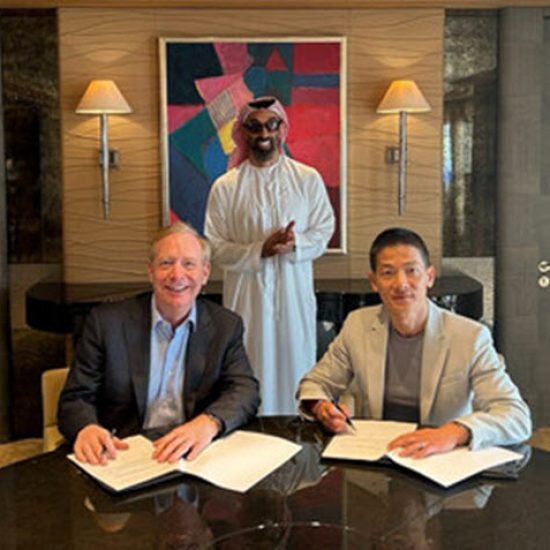 |By Matein Khalid| “Stop the murder, stop the lies, out, out, you nest of spies!” So chanted the crowd outside South Africa House on Trafalgar Square in the autumnal mists of London circa 1988. The anti-apartheid struggle was the moral compass of my generation, from the Soweto riots to Steve Biko’s murder to the horrific “necklacings in the townships and killing fields of the Limpopo to Madiba’s release and the birth of a multiracial, democratic South Africa in 1994. If there was ever an anthem for humanity, it would have to be the haunting and exquisite Nikoksi sikellei Africa. Gold bless Africa. Nkosi sike lela. God bless us all – the ultimate, existential plea.
|By Matein Khalid| “Stop the murder, stop the lies, out, out, you nest of spies!” So chanted the crowd outside South Africa House on Trafalgar Square in the autumnal mists of London circa 1988. The anti-apartheid struggle was the moral compass of my generation, from the Soweto riots to Steve Biko’s murder to the horrific “necklacings in the townships and killing fields of the Limpopo to Madiba’s release and the birth of a multiracial, democratic South Africa in 1994. If there was ever an anthem for humanity, it would have to be the haunting and exquisite Nikoksi sikellei Africa. Gold bless Africa. Nkosi sike lela. God bless us all – the ultimate, existential plea.
So it pains me to see the state whose birth so inspired me degenerate into political and economic disaster. The South African rand has plunged 50% against the US dollar, Pretoria’s debt will soon be sovereign junk (below BBB minus), global investors have lost faith in the integrity and even competence of Jacob Zuma’s African National Congress (ANC) governments. Things fall apart. Cry the beloved country. The looting machine. Nkosi sike lela!
Jacob Zuma must resign as he has run a corrupt and incompetent ANC government, as the Gupta family’s political intrigues attest. I always wondered about the fondness of African Big Men for Indian money lenders (Indian masseuses in the fatal case of General Sani Abache in 1998. The Swiss just returned $380 million of the money that the late Nigerian military dictator looted from the continent’s most populous nation. Shame!). When the secretary general of the ANC warns that South Africa risks becoming a “Mafia state”, all bets are off. If private predatory capitalists seize power in Africa’s most industrialised economy, albeit one without a viable power grid, the investment case for continent evaporates.
ANC has squandered the moral authority Nelson Mandela and the dead of Soweto bequeathed to it. As the Black Death plagues the mining industry, its economy faces a grim future and Zuma’s U-turn on Finance Minister Nene has gutted his credibility with the world financial markets. Short Azania (aka the South African rand) was a macro trade de jour since early 2014. Not even Pravin Gordhan can now prevent a sovereign downgrade, exodus of global investors, painful risk premium on South African debt in the Euromarkets. It is a pity that the ANC is a de facto one party state, with 60% of the popular vote since 1994 despite its awful governance track record and Jacob Zuma’s misrule since 2009. The ANC has made a fatal mistake in once again white washing the embattled Zuma just so Party cronies can continue to loot the state. This is not just post-apartheid South Africa’s loss but the loss of the entire continent. Did the murdered souls of Sharpeville, Robben Island, Soweto and the Johann Vorster prison in Pretoria really die for nothing?
The ANC “recalled” President Thabo Mbeki for far less. Zuma leads a corrupt state where rent seekers squeeze the entrepreneurial spirit of the people. The current account deficit, capital flight, the secular plunge in state revenues due to the commodities crash are an economic ill omen. Twenty years after the fall of apartheid, the jobless rate is 35%, the education system is broken. Yet South Africa is also a $600 billion GDP state that has created world class companies, banks listed on the Johannesburg Stock Exchange – despite and not because of the ANC government that has failed the poor and the rising number of unemployed men and women in the shanty towns and townships of the veldt.
It is a pity that even in 2016 proven failures like Zimbabwe’s Robert Mugabe or petrocurrency kleptocracies like Angola and Equatorial Guinea continue to exist in Africa. Even South Sudan, the world’s next state born out of a horrific civil war that claimed 2 million plus lives over three decades, born amid such high hopes once John Garang realized his dream in death, has degenerated into inter-tribal civil war and ethnic massacres.
So many African economies and societies were destroyed by the regimes and ideas of the continent’s Big Men – Mugabe, Milton Obote, Emperor Bokassa, Mengistu, Mobuto Sese Seko, Jomo Kenyatta, Generals Abacha/Babangida, Julius Nyerere, Samora Machel, Gaddafi, Banda, Kutu Acheampong and the Dos Santos clan. Almost sixty years after Harold MacMillan’s “winds of change” speech ended British colonialism in Africa, the world needs to rethink the continent’s models of political governance. Lenin said the Tsar’s soldiers voted with their feet. Professional investors like me vote on a country with our Bloomberg screens and the “best and brightest” of South Africa just leave Madiba’s broken rainbow nation forever in the quest for a green card. Nkosi sike lela!
GCC Focus – Dubai and the global banking stresses of 2016!
Dubai’s resilience to the global economic cycle was vindicated during the 1998 Asian crisis, the post 9/11 decade and its role as a safe haven for offshore wealth after geopolitical traumas as varied as the collapse of the Soviet Union, civil wars in Lebanon and Iraq and the Arab Spring. This business cycle will prove no different, though the Emirates NBD domestic economic tracker suggests the first cyclical private sector contraction since 2009, led by the big chill in tourism, construction and wholesale/retail trades.
Even though oil and gas is a mere 4% of the Dubai GDP, the emirate is the most networked, globally integrated, capital flow sensitive economy in the Gulf, with trade, financial services, aviation and property/construction at least 85% of GDP. This makes it impossible for Dubai to be immune to the mood swings of Wall Street risk assets and the daisy chains of global money markets as well as banking loan growth at home.
Dubai’s stock and property markets are highly correlated to the global credit cycle, cross border trade flows, the US dollar’s strength (or weakness), oil prices and Federal government spending. All these macro metrics flashed a growth SOS to me since summer 2014, as I argued ad infinitum in this column when Emaar was 11 AED and property prices were 20% higher. Then the brutal, Darwinian logic of global macro took over.
It is no longer possible to gloss over the tight money syndrome and credit squeeze in banking markets. British banks Standard Chartered, RBS, Barclays and HSBC, who once accounted for 70% of cross-border banking flows into the UAE, have slashed their footprint in the region, due to devastating losses in energy/commodity loans in Europe/Asia and Basel Three capital adequacy ratio pressures. RBS has exited the UAE. Stan Chart has existed SME lending and axed hundreds of UAE based staff. Barclays laid off 150 bankers in its Emaar Square office and HSBC plans to axe 50,000 staff making it the world’s ex local bank.
As Abu Dhabi government deposits fell in 2015 due to the crash in oil prices, its flagship banks NBAD, ADCB, First Gulf and UNB were forced to reduce loan growth to preserve UAE central bank mandated loan/deposit ratio. This led to stress in the interbank market, where the three month UAE dirham rate (EIBOR) is now more than double the three month LIBOR, the benchmark price of bank funding in the Euromarkets. The Fed insider’s revolt against Dr. Yellen’s dovish policies makes a June Fed rate hike and a higher US dollar certain in 2016. This means the current credit stress in the banking system will continue, as the cost of interbank funding, trade finance, corporate loans and home mortgages rises.
The lifting of sanctions in Iran has not revived bilateral trade flows though the Syrian ceasefire has at least lessened the mass slaughter in the Levant. China’s People Bank must depreciate the yuan to revive the Middle Kingdom’s economy now that the biggest credit bubble in history has gone bust. This means Asian currencies will also be under pressure (hence my short on the Singapore dollar at 1.36 for a 1.50 target!) and global air freight rates and container shipping rates will not rise. The Baltic Dry Freight index is 96% below its pre crisis peak, a victim of trade’s new Ice Age from China.
Tourism from Russia and South Africa has also been hit by the ruble’s 120% and rand’s 54% fall against the US dollar in the past two years. Capex cutbacks and job losses have accelerated in oil services, drilling, construction and even banking. It is not possible for office rents to rise with 1 million square metres of extra supply (Asteco data) adds to the existing glutted space market. Residential property prices will also continue to fall as long as property finance costs and new supply (29,000) units rise in 2016. A major rebound in black gold, is an unlikely scenario since the shale oil revolution and Saudi Arabia’s refusal to play the role of a swing producer changes the rules of the planet’s energy Great Game. So the Gulf must cope with a $400 billion deflation shock in petrocurrency revenues at a time of rising US interest rates, a slump in world trade, a China hard landing and a banking credit squeeze.
One silver lining of the post-Lehman debt shock was Abu Dhabi’s willingness to use its vast sovereign wealth assets to strengthen the financial linkages of the UAE Federation, the most successful political and social experiment in modern Arab history. Dubai’s resilience and cosmopolitan ethos will enable the city to reinvent its business model and leverage its proven formulas for success.
Macro Ideas – Ethiopia is East Africa’s economic fairy tale!
As a global strategist for a Saudi family office with vast interests in East Africa, I am fascinated by Ethiopia. Ethiopia once broke my heart in my college days at Penn. I befriended Amharic refugees who were the sons and daughters of executed nobles from the court of Emperor Haile Selassie, Bob Marley’s Rastafari. The Emperor was overthrown in a bloody military coup led by a Marxist-Leninist cabal called the Dergue who launched one of the bloodiest reigns of terror in modern Africa. Haile Selassie was murdered, his court officials gunned down or hanged, hundreds of thousands of poor peasants starved to death in famines. Soviet and Libyan petrodollars turned Colonel Mengistu Haile Mariam into Africa’s most ruthless Marxist dictator until his regime fell in 1991.
Yet Ethiopia under Meles Zenawi and his successors has evolved into an Abyssinian Tiger, with a decade of 10 – 12% annual GDP growth. This ancient Coptic Christian empire, literally a “virgin economy”, the site of ancient Axum, Lalibela and the medieval fortresses of Gondar, is Africa’s fourth largest economy, a nation of 97 million that is a rising power in Est Africa, a magnet for the Gulf’s agro-investing elite. Blackstone just invested $200 million in Afriflora, the world’s largest producer of roses. Roses are 11% of exports, dwarfed by coffee, 24% of exports.
It is tragic that 137 years after Thomas Alva Edison invented the light bulb, 600 million Africans have no access to power, that 600,000 people die from cooking fire smoke inhalation each year, that Spain produces more electricity than the entire continent. Ethiopia’s $5 billion Great Renaissance Dam could be the model for Africa’s new hydroelectric paradigm, with new projects in wind power, solar and geo-thermals. A nation once enslaved by Mussolini’s colonial fascists and Mangistu’s Marxists, has now been reborn. Grains of rice, not barrels of oil, will define the Ethiopian – GCC relationship and the Indian Ocean will replace the Atlantic as the focal point of Great Power rivalries. That is why we invest in Djibouti, the Red Sea Dubai.
Ethiopia’s “development state” has built the most profitable, highest margin airline in Africa. Ethiopia has 400,000 students enrolled in 32 new universities and the Addis Ababa government spends 22% of the national budget on education. Ethiopia is also the potential food supplier to Saudi Arabia, the strategic rationale behind Saudi billionaire Sheikh Mohammed Al Amoudi’s $200 million 10,000 hectare commercial farm Saudi Star in the Gambella lowlands. Saudi Star could one day produce 140,000 tonnes of rice slashing Addis’s rice import bill by $100 million and exporting rice to the Saudi kingdom across the Red Sea. Industrial agribusiness is the wave of the future in a nation where children starved to death only a generation ago. Now this is a new fairy tale.
Africa utterly bewitched me on my numerous trips – from the marble palaces of Marrakesh to the gold lion’s hide savannah of Kenya, from the emerald green rainforests of the Congo to the Gallic charm of Abidjan and the megacity chaos of Lagos in the armpit of West Africa. I grew up on Osibisa, Femi and Paul Simon’s Graceland. I dreamt about Joseph Conrad’s heart of darkness, Robert Ruark’s something of value, Wole Soyinka’s country called Biafra, Graham Greene’s Liberian journey without maps and Chinua Achebe’s Igbo bush folklore as things fall apart. As an international banker, I met a military dictator in Lagos and a kleptocratic petro-billionaire in Luanda and saw the high priests of the oil curse loot the wealth of Angola and Nigeria.
But I also remember an eerie twilight in a slaver’s fortress just outside Luanda and wild parties on the rooftop terraces of Lagos hotels with the expat jeunesse dorée. I remember the croaks of the tree frogs and the groans of a dying cheetah. I remember the Angolan wall where Colonel Callan and his white mercenaries were shot and the vastness and timelessness of the Great Rift Valley, the snow capped Atlas or the desert wadis outside Sharm al-Sheikh (listening to a Nancy Ajram concert. Akhas mak Ah!). Africa just seeped into my bloodstream, my nervous system, my soul even when it horrified me and broke my heart, as in Rwanda, Somalia, Algeria and Sierra Leone. Cape to Cairo, the long dead Victorian sahibs dreamt. So do I.





